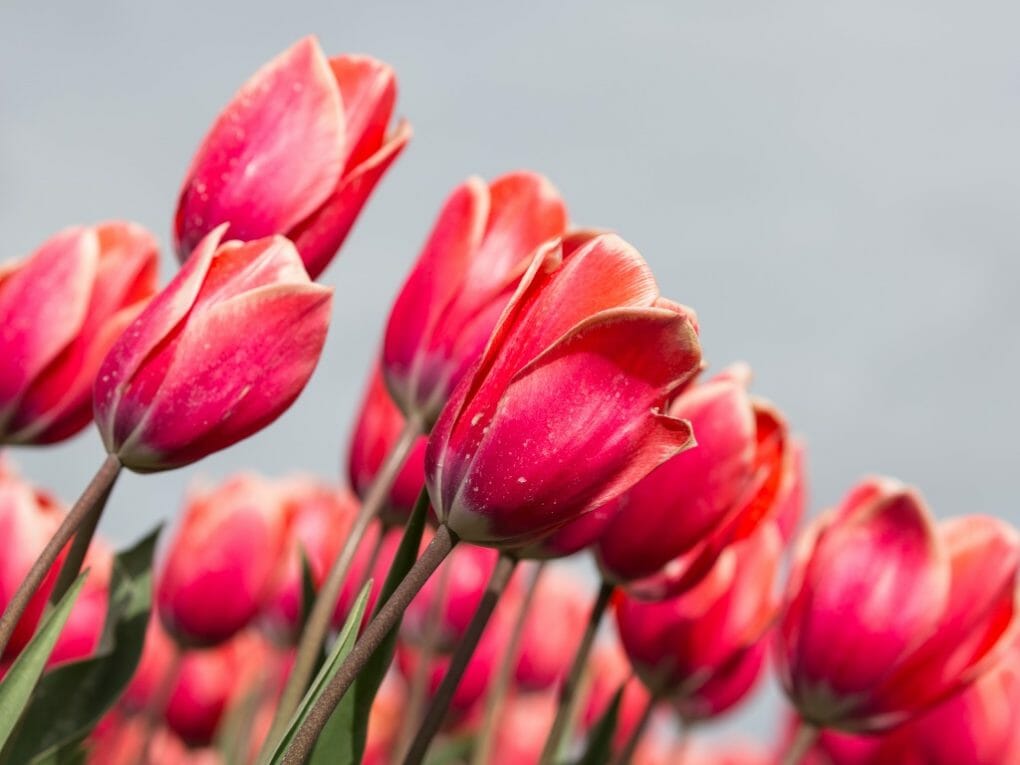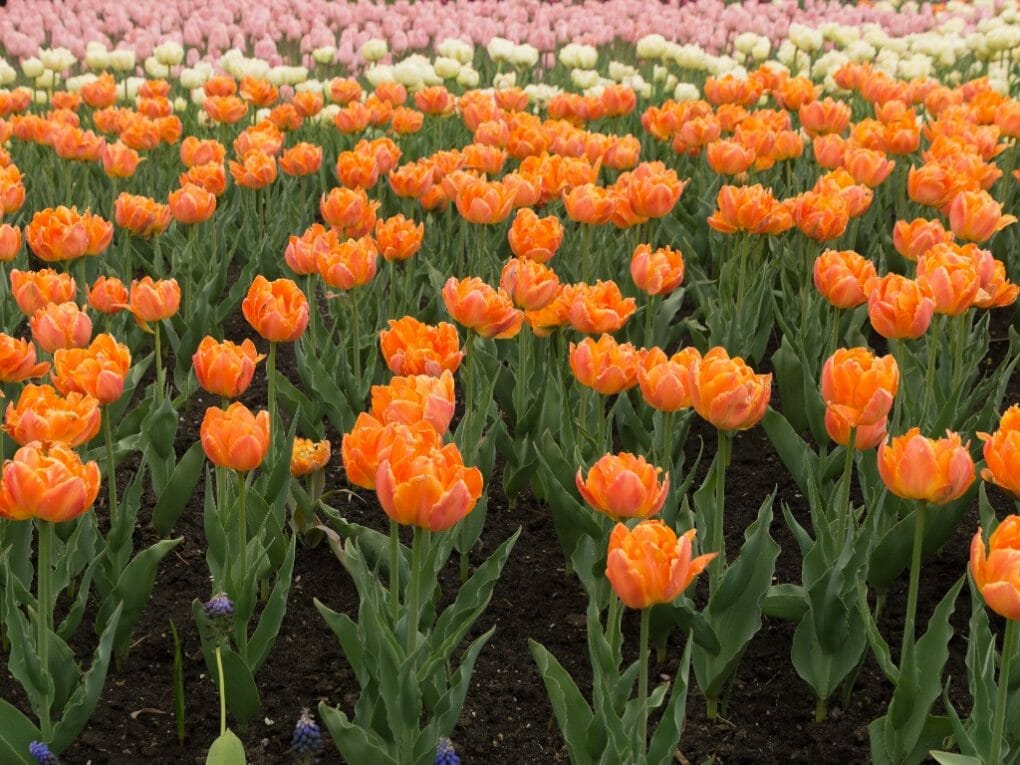Tulip Plant Care | Flower Bed, Bouquet, and Pot Care Tips for Tulips

The tulip is one of the most beautiful flowers in the world, and growing them can be a rewarding experience for any gardener. To ensure that your tulips thrive and produce the best blooms possible, it’s important to give them the proper care and attention. If you’re a fan of tulips, you’re probably well aware of their delicate beauty and need for special care. This article will discuss flower beds, bouquets, and tulip pot care tips. We’ll cover topics like planting, watering, and fertilizing, so you can ensure that your tulips get the care they need to thrive. With these tips in hand, you’ll be able to enjoy those vibrant blooms all season long!
Table of Contents
Bouquet Care for Tulips
You Need To Select an Appropriate Vase
The size of the vase is essential. You want it large enough so that the flowers have room to grow but not too large that it takes up too much space. Second, you’ll want to consider what kind of soil or substrate you will be using; if you water your plants with tap water, then a standard ceramic pot will work fine. However, if you regularly add fertilizer or other supplements, something with more drainage capacity may be better suited. And lastly, ensure the vase is resistant to chipping and breaking. A durable material like porcelain would be ideal.
Make a 45-Degree Cut Into the Stems
When trimming tulip stems, remember that the flowers will continue to expand once placed in the vase. For the flowers to be the perfect length, Bladow recommends holding the arrangement against the vase’s side before cutting. She recommends cutting them at a 45-degree angle to create a “straw-like effect” that will help the stems to absorb the clean water better.
Don’t Forget To Water
ATulip loves water. So, always keep calm and fresh water for your bouquet. Tulips require a lot of water, so once you get them home and choose your favorite vase, fill it up approximately three-quarters of the way. Change the water daily. Flower food, a penny at the vase’s base, lemon juice, or half a teaspoon of regular cane sugar will help your blossoms thrive.
Protect Yourself From Excessive Sun Exposure
Avoid putting the vase in full sunshine or heat; after the blooms open, the tulips will wilt more quickly because they are “photosensitive,” meaning they grow and open in response to sunlight. According to Bladow, “tulips should be purchased at an ‘early’ cut stage or a ‘closed’ stage to get optimal vase life.” Once the tulips have opened, they will only last for a while in a vase. Although tulip stems will bend slightly when the flowers “stretch” toward the light, they shouldn’t appear “floppy.”
Add Other Flowers but Choose Them Carefully

Remember that tulips are particularly sensitive to other flowers if you wish to incorporate them in a mixed bouquet. She goes on to mention that daffodils and narcissus are two typical flowers that can shorten the lifespan of tulips because of the chemical they release. When we combine tulips with other flowers like roses, kale, and hydrangea, we never have any problems.
Care Tips for Tulips in Flower Bed
Plant in the Fall or Winter Season
Before planting, you should check your planting zone. Generally, you should plant 6-8 weeks before the ground freezes. In the Northern area, you can plant your tulip in September. Whereas in the southern area, you can grow it in December.
Light
Tulips of every variety flourish in bright sunlight. However, when tulips actively bloom in the early spring, regions under deciduous trees that are gloomy in the summer are generally sunny. These areas are perfect for planting tulips and other spring bulbs.
The ideal soil for tulips is rich, drains well, and has a neutral to slightly acidic pH. (6.0 to 7.0). Compost is a great way to help the bulbs by increasing drainage and feeding them simultaneously. Do this preferably before setting the bulbs in the ground. Otherwise, you can improve soil drainage, aeration, and tilth by spreading a few inches of compost over the surface.
Water
After planting the bulbs, please give them a good soaking of water, but don’t water them again unless there is a prolonged drought. Don’t water your tulips if you get rain once every two weeks. Every two weeks is ideal for watering in dry climates.
Temperature and Humidity
Most USDA hardiness zones 3 through 8 provide ideal growing conditions for tulips because of their cool to cold winters and dry, warm summers. Because they need 12–14 weeks of temperatures below 55°F to bloom, they can only be grown annually in areas with mild winters from bulb providers that prechill the plants before planting.
Because heavy spring and summer rainfall is often associated with high humidity, tulips fare better in drier places.
Fertilizer
When you plant the tulip bulbs, you should do it in a hole fertilized with compost, bone meal, or granular fertilizer. Amounts should be used by the information provided on the product label. Once new growth appears in the spring, feed them again. There is no need for any other kind of feeding save this.
Pruning
To extend the life of your tulip bulbs and keep them blooming year after year, when the flowers have died, cut the flower stalks off. When the leaves turn yellow in mid to late summer, you should leave them where they are. The energy of the light bulb is restored in this way.
Blooming Tulips in a Flower Pot

Make Sure You’re Using the Proper Vessel
Always check the drainage of each pot you use. Your bulbs will deteriorate faster if they are submerged in water. You may prevent this by installing bark drains in your yard. Putting the bark at the bottom of the pot will keep the soil from going bad.
Put the Bulbs an Inch Apart and Then Fertilize the Soil
The visual impact of a cluster of tulips in a container is greater than that of a single blossom, so space the bulbs no more than an inch apart. She suggests that you can plant other bulbs between your tulips, like daffodils or crocuses. If you want your tulips to bloom as well as if planted in the ground, you’ll need to treat them the same way. After flowering, the bulbs and foliage should be cleaned similarly.
Make Sure There’s Enough Light and Avoid Overwatering
Johnston suggests two things to do with indoor tulips: don’t overwater them and put them near a sunny window. When watering, slowly drench the bulbs and drain any excess water away. As tulips get bigger, they will want more moisture but don’t allow them to sit in a pool of water.
